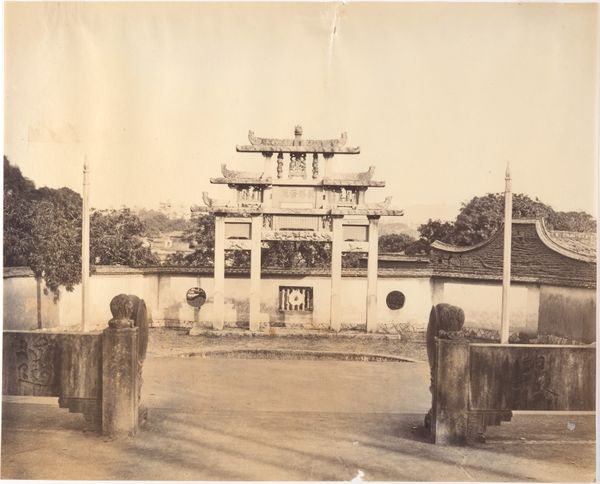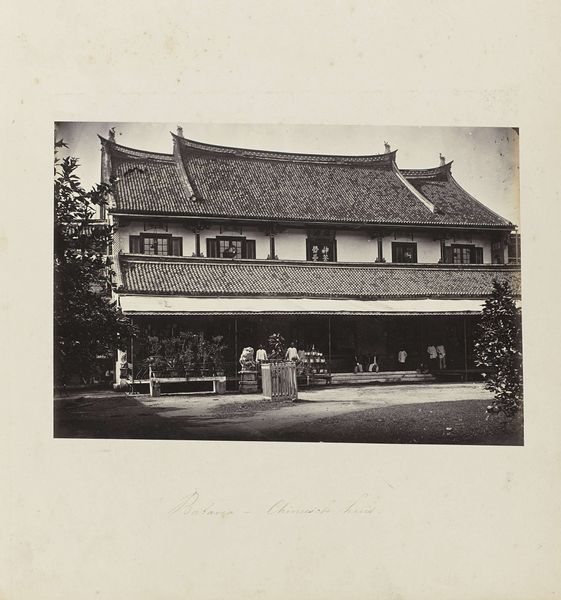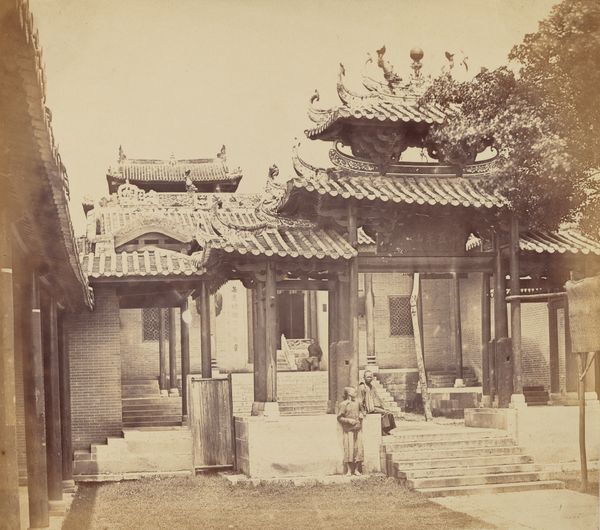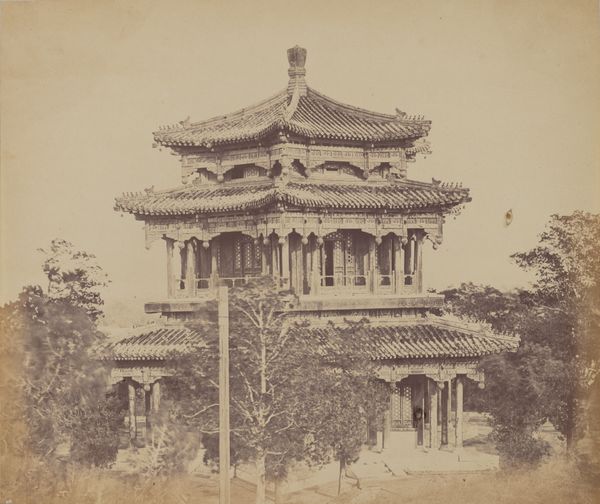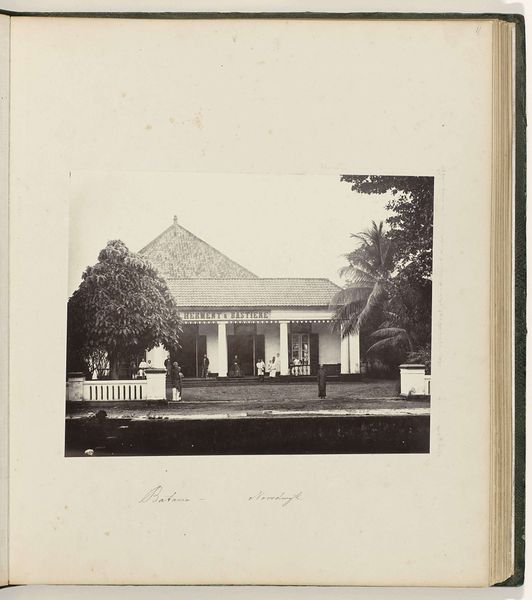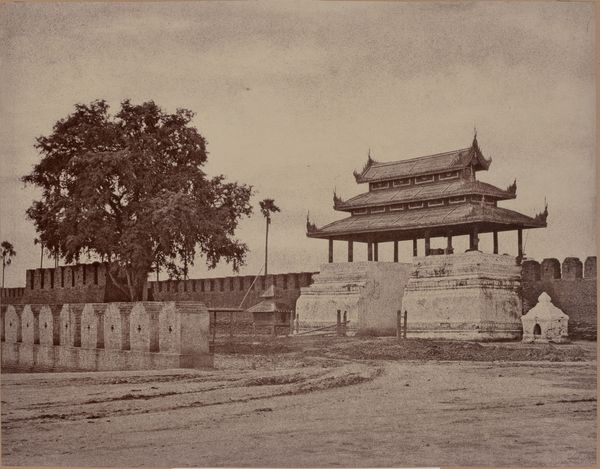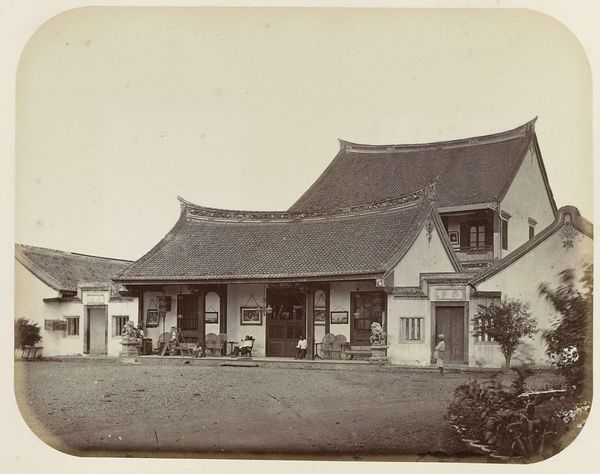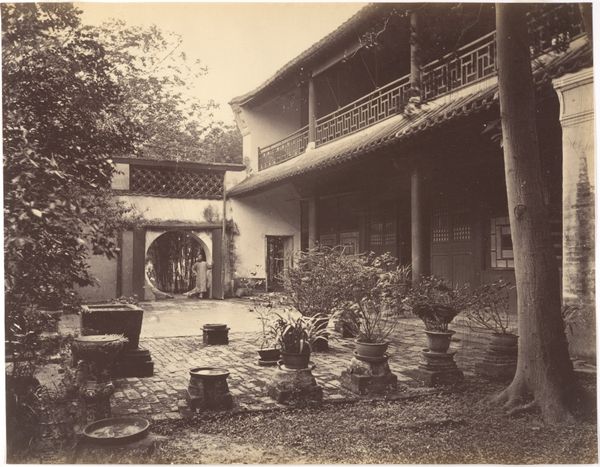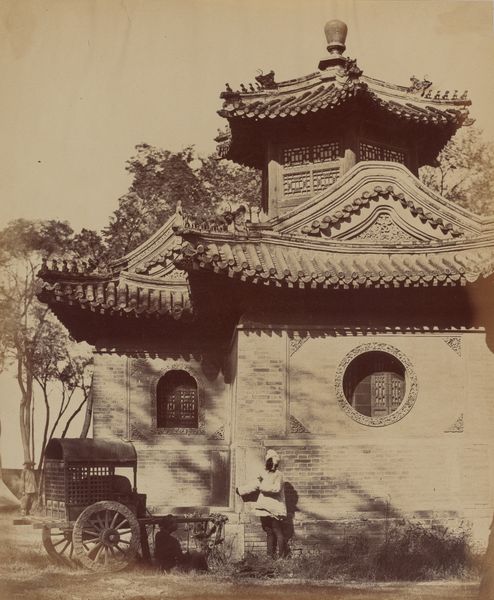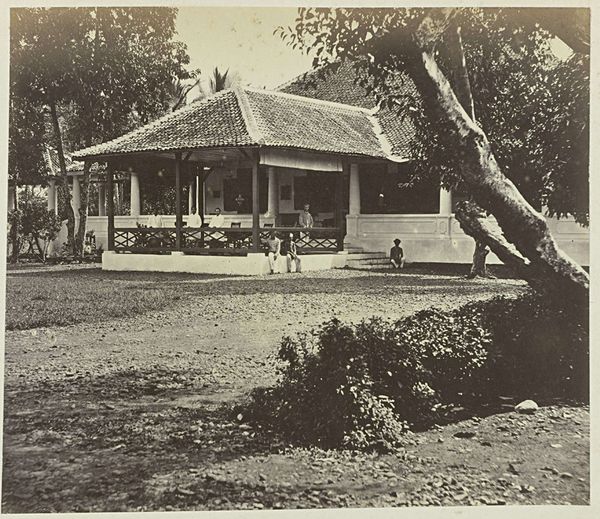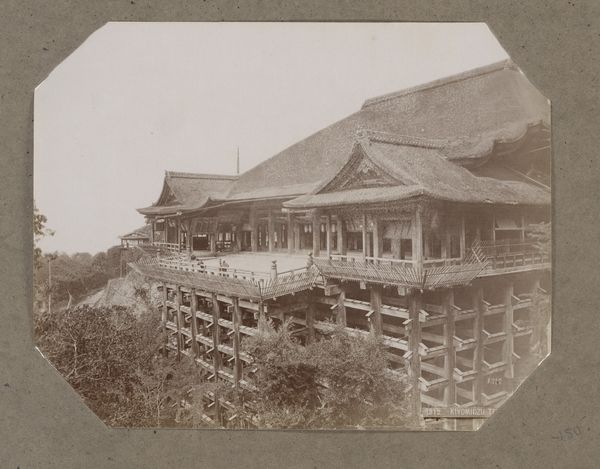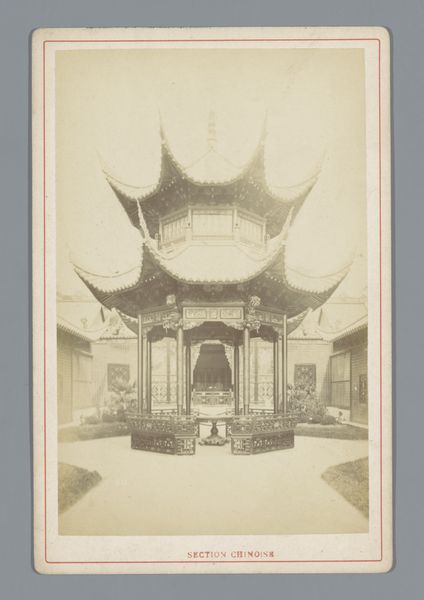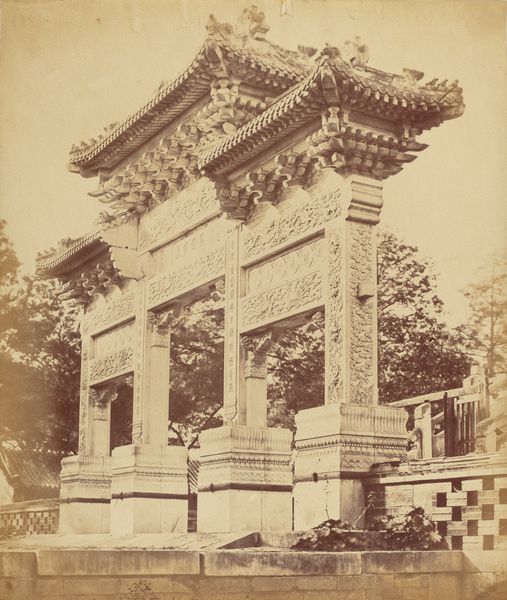
photography, albumen-print, architecture
#
landscape
#
photography
#
arch
#
orientalism
#
19th century
#
albumen-print
#
architecture
Dimensions: 16.9 x 22.7 cm (6 5/8 x 8 15/16 in.)
Copyright: Public Domain
This photograph of the Tomb of the Bishop of Adran, was taken in Cochinchina, now Vietnam, by Emile Gsell, using the then-new technology of chemical photography. Gsell was a jeweler before he became a photographer, and he brings a craftsman's eye to this image. The photograph, a salted paper print from a collodion negative, involves a labor-intensive process of coating, sensitizing, exposing, and developing. The final print has a tactile quality, with tones ranging from warm sepia to cool grays. Consider also the labor embodied within the tomb itself. We see stone carving, applied mosaic, and complex carpentry. In both cases, whether photographer or funerary craftsman, the social context is also important: Gsell was working in service of French colonialism, while the tomb represents the intersection of indigenous Vietnamese culture and European Catholicism. Paying attention to the processes and context involved, helps us understand how materials and making are central to our engagement with art.
Comments
No comments
Be the first to comment and join the conversation on the ultimate creative platform.
